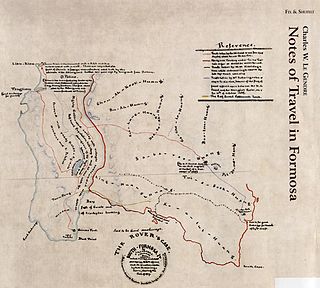 W
WThe Council of Indigenous Peoples, formerly known as the Council of Aboriginal Affairs, is a ministry-level body under the Executive Yuan in Taiwan. It was established to serve the needs of the country's indigenous populations as well as a central interface for the indigenous community with the government.
 W
WThe Formosan Aboriginal Culture Village is an amusement park in Yuchi Township, Nantou County, Taiwan which has been in operation since 1986. It is distinctive for its Formosan aboriginal culture theme. The park contains the tallest free-fall ride in Taiwan as well as Taiwan's largest European gardens and bell tower.
 W
WInō Kanori was a Japanese anthropologist and folklorist known for his studies in Taiwanese Aborigines. Ino was the first person who classified the aboriginal tribes into several groups, instead of the traditional classification which imprecisely recognized these aborigines only as "cooked/domesticated" or "raw/wild" .
 W
WKucapungane is a Rukai aboriginal village in the mountains of southern Taiwan. Virtually abandoned since the 1970s, the village is well-known for its slate houses, and is listed on the 2016 World Monuments Watchlist as an endangered site. Successive typhoons and earthquakes have made access to the village increasingly difficult, and at present the only way to reach it is on foot over unstable mountainous terrain.
 W
WThe Man with the Compound Eyes is a Taiwanese novel by Wu Ming-Yi. The novel was first published in Taiwan in 2011 by Summer Festival Press. In 2013 it became Wu's first novel to be translated into English and was released simultaneously in the UK and in the USA. Before publication an extract of the novel was published in the online literary journal Asymptote.
 W
WThe Mudan incident of 1871 was the massacre of 54 Ryukyuan sailors in Qing-era Taiwan who wandered into the central part of Taiwan after their ship was shipwrecked.
 W
WThe Musha Incident (Chinese and Japanese: 霧社事件; pinyin: Wùshè Shìjiàn; Wade–Giles: Wu4-she4 Shih4-chien4; rōmaji: Musha Jiken; Pe̍h-ōe-jī: Bū-siā Sū-kiāⁿ), also known as the Wushe Rebellion and several other similar names, began in October 1930 and was the last major uprising against colonial Japanese forces in Japanese Taiwan. In response to long-term oppression by Japanese authorities, the Seediq Indigenous group in Musha (Wushe) attacked the village, killing over 130 Japanese. In response, the Japanese led a relentless counter-attack, killing over 600 Seediq in retaliation. The handling of the incident by the Japanese authorities was strongly criticized, leading to many changes in Aboriginal policy.
 W
WPas-ta'ai, the “Ritual to the Short People”, is a ritual of the Saisiyat people, a Taiwanese aboriginal group. The ritual commemorates the Ta'ai, a tribe of short dark-skinned people they say used to live near them. The ritual is held every two years and all Saisiyat are expected to participate.
 W
WThe Rover Incident occurred on 12 March 1867 when the American merchant ship Rover, captained by Joseph Hunt who was accompanied by his wife Mercy G. Beerman Hunt, and en route from Swatow to Newchwang, was wrecked off the coast of Formosa. The ship struck a coral reef called Chihsingyen near Oluanpi and drifted into the area of Kenting in modern-day Hengchun, Pingtung County, Taiwan. Fourteen American sailors, including Hunt and his wife, were killed by Taiwanese Aborigines in revenge for earlier killings of Kaolut (Koalut/Ku-a-lut/etc) tribe members by foreigners. Subsequently, the U.S. military decided to send a military expedition against the tribe members responsible.
 W
WThe Shung Ye Museum of Formosan Aborigines is a museum located just 200 meters diagonally across from the National Palace Museum in Shilin District, Taipei, Taiwan. It houses exhibits relating to the cultures and histories of the Taiwanese aborigines. The aboriginal tribes live mainly in the mountainous east and south of Taiwan and have historically spoken a variety of Austronesian languages, so it was thought important to have a central location in the capital where their cultures could be on display. Both permanent and rotating exhibits are a part of the museum.
 W
WThe Wulai Atayal Museum is a museum about local aboriginal culture on Wulai Old Street in Wulai District, New Taipei, Taiwan.
 W
WThe YuYuPas Tsou Cultural Tribe Park is a tourist attraction located at about 1,200 meters above sea level in the mountainous Alishan area of Chiayi County, Taiwan Province. Originating from the Tsou language, YuYuPas means "very rich." It covers an area of roughly two hectares and is surrounded by extensive tea gardens planted with alpine oolong tea.